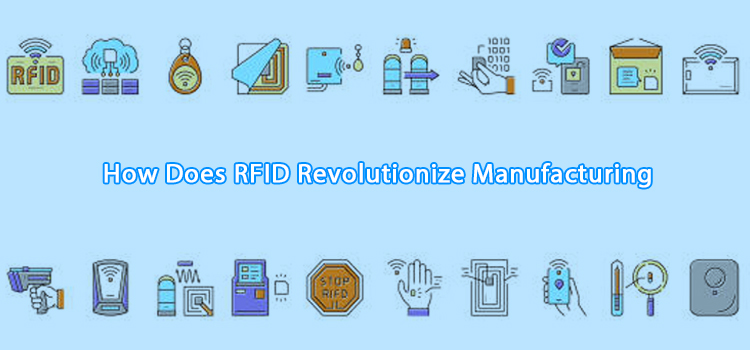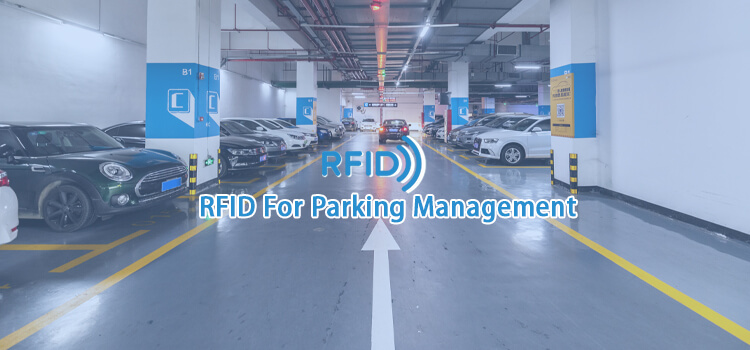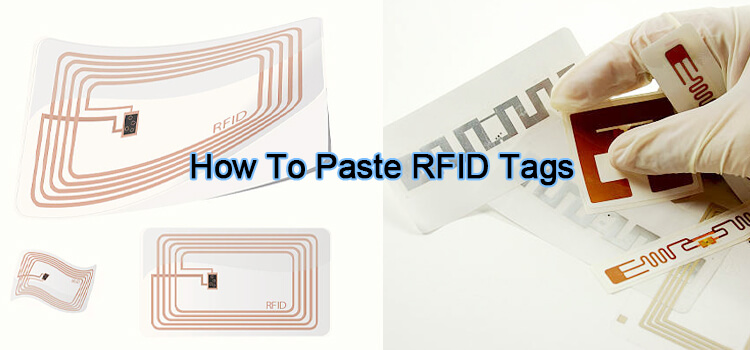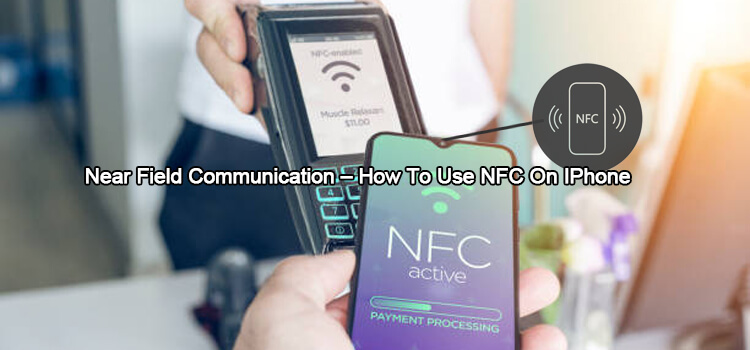Are you curious about RFID tags and how they can help your business operations? You’re not alone. As businesses across all industries continue to streamline their processes, more and more are turning to radio-frequency identification (RFID) systems for greater efficiency. But what exactly are these systems and what advantages could they offer for your enterprise?
Whether you’re a small startup or an international corporation, it’s worth looking into the power of RFID technology if you want to create greater opportunities for your company. In this blog post, we’ll explain the basics of RFID tags and provide an overview of their potential applications to show why so many companies have adopted them.
RFID Tags – Definition and Function
Radio Frequency Identification (RFID) tags are small electronic devices that use radio frequency waves to identify and track tags attached to objects. The tags contain electronically-stored information which can be read from up to several feet away by an RFID reader device. They are used for a wide range of applications, such as inventory tracking, access control, and asset management.
RFID tags have two main components: a chip that stores information about the tag itself, and an antenna that transmits the data stored on the chip. When used in combination with an RFID reader, this system allows for real-time tracking of items and other assets.
RFID tags come in many shapes, sizes, and frequencies depending on their purpose. Some are designed to be embedded in products while others may feature adhesive backings or even be sewn into clothing.
RFID technology is most commonly used for inventory tracking and asset management. It allows companies to quickly monitor the movement of their products or equipment without requiring manual input into their systems.
It also offers advantages over traditional methods such as barcodes due to its greater range – RFID readers can detect signals from tags up to 30 feet away. Additionally, since each tag contains a unique identifier, it is much more difficult for someone to attempt duplication or fraud using this system.
Ultimately, RFID technology has proven itself a valuable tool both in industrial applications as well as consumer markets; offering easy tracking solutions while providing robust security features necessary in today’s digital world.
How RFID Tags Work
Radio tags contain a chip that stores data, as well as an antenna that transmits this data when activated, allowing the tag to be detected without needing to be scanned directly like a barcode.
Here’s how RFID technology works, step by step:
- The reader device sends out a signal activating the tag’s antenna.
- The tag is then triggered by this signal, sending back its unique information from its chip to the reader device.
- The reader receives this information, recognizes it, and stores it in its memory or passes it along for further processing.
- Depending on what technology is being used, the RFID tags may also be able to send additional signals or change their stored data if necessary.
Once these elements are in place, companies can use RFID tags for diverse applications. For example, manufacturers may implement them to track their products throughout the supply chain and ensure accurate inventory records. Facilities managers may also use them to monitor the movements of equipment or personnel on their premises.
Different Types of RFID Tags
While all RFID tags operate using the same basic principles, they can be categorized based on the following:
Source of Power
RFID tags need the power to function, and this can come from many sources. Here are the two main types:
- Passive RFID Tags. These are light, low-cost tags that don’t require a power source. Instead, they rely on the radio waves from the reader to activate and transmit data. As such, these tags can only be read at short distances, typically within a few feet.
- Active RFID Tags. These are larger and more powerful tags that use a built-in battery to transmit data. This allows them to be read at much longer distances, typically up to 100 meters or more.
Active tags are expensive and need regular battery replacements. As such, you must be ready to make a tradeoff between distance and cost when choosing the type of tag to use. As a rule of thumb, only use active tags on high-value or high-risk objects.
Frequency Used
RFID tags can operate at different frequencies, depending on the application and industry requirements. Most tags operate in one of three main frequency ranges:
- Low Frequency. This is the most common range, typically operating at 125-134 kHz. It is preferred for short-range applications, including animal tracking, toll payment systems, and access control. It is ISO 11784, ISO 14223-1, and ISO 11785 certified, making it the best for livestock tracking. Even better, LF RFID tags are not affected by metal objects, making them the ideal choice for smart shelves used in warehouses and retail stores.
- High Frequency. This is the middle range, typically operating at 13.56 MHz It is preferred for short-range applications, including attendance tracking and access control systems. NFC (Near Field Communication) is a subset of this range and is widely used for mobile payments and smart objects. Note that HF tags can be read from up to several meters away, but are more affected by metal objects than LF tags.
- Ultra-High Frequency (UHF). This is the highest frequency, typically operating at 860-960 MHz It is preferred for long-range applications, such as supply chain management, asset tracking, and logistics applications. It has a read range of up to 30 meters or more. However, it can be impacted by metal objects and does not have the same level of accuracy as HF/LF tags for indoor applications.
If you want to combine the efficacy of UHF tags with the cost-effectiveness of LF tags, look for dual-frequency RFID tags that can operate at both ranges. This ensures you get the benefits of each without any of the drawbacks.
Besides, manufacturers often provide guidelines on the optimal placement of tags for different applications. They also customize tags based on the unique needs of a particular business. For example, metal-mount UHF RFID tags are modified to offer the benefits of UHF tags on metal surfaces.
Materials Used
RFID tags can be made from different materials, depending on their intended use. Here are some common materials used:
- Plastic/PVC RFID Tags. These are the most common types of tags, used for low-cost applications such as retail item tagging. They are inexpensive and lightweight. Additionally, they are durable and water-resistant, making them suitable for various environments.
- Epoxy RFID Tags. These are used for applications that require tags to withstand extreme heat, cold, water immersion, and other harsh conditions. They are typically made from epoxy-encapsulated ceramic or glass microchips.
- Wood RFID Tags. These are highly aesthetic tags, often used for tagging unique objects such as wine bottles or wooden furniture. They are durable and waterproof, making them suitable for outdoor applications.
- RFID Paper Labels. These are used for applications where the item must be printed with a logo, QR code, or other information. They can be made from standard paper or film materials, depending on desired functionality.
- Other Materials. RFID keyfobs, RFID wristbands, and RFID stickers are common materials used for different applications. Depending on your industry, you may find other unique materials that are more suitable for your needs.
When deciding on the best RFID tags for your business, consider the materials used, frequency range, and other factors that are important to you. For example, if you need tags that can withstand extreme heat or cold, opt for epoxy RFID tags or wood RFID tags.
If you need printable tags for logos or QR codes, look for RFID paper labels. If you need tags that can be used on metal surfaces without impeding performance, opt for a metal-mount UHF tag.
Overall, choosing the ideal RFID tags requires careful consideration of your business needs and application environment. Research, consult with experts, and make an informed decision that will help improve accuracy and efficiency in your supply chain or asset tracking system.
Benefits of Using RFID Tags
- Improved Accuracy and Efficiency. RFID tags enable automated data collection, which can significantly improve asset tracking and inventory management. This leads to greater efficiency and cost savings for businesses across industries.
- Reduced Labor Costs. RFID tags eliminate the need for manual data entry and human intervention, which dramatically reduces labor costs. This can save businesses thousands or even millions of dollars each year.
- Improved Supply Chain Visibility. RFID tags enable real-time tracking of inventory and assets, giving you greater transparency. As such, it will help you reduce waste and misplacements.
- Increased Data Security and Compliance. RFID tags provide robust authentication capabilities, enabling you to detect counterfeits or track the origin of goods in case of a recall. They also improve compliance with industry regulations such as HIPAA and GDPR, protecting your business from fines and other legal penalties.
Overall, the benefits of using RFID tags are numerous and can help improve accuracy, efficiency, and overall business performance. Whether you need to track inventory in your warehouse or gain visibility into your supply chain, RFID tags can help get the job done quickly and reliably.




